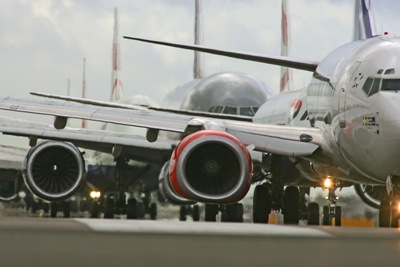U.S. GAO Report on Aviation Safety Says Better Data and Targeted FAA Efforts Needed to Identify and Address Safety Issues of Small Air Cargo Carriers
(Source: U.S. GAO)
The air cargo industry contributed over $37 billion to the U.S. economy in 2008 and provides government, businesses, and individuals with quick delivery of goods. Although part of an aviation system with an extraordinary safety record, there have been over 400 air cargo accidents and over 900 incidents since 1997, raising concerns about cargo safety.
GAO’s congressionally requested study addresses:
(1) recent trends in air cargo safety,
2) factors that have contributed to air cargo accidents,
(3) federal government and industry efforts to improve air cargo safety and experts’ views on the effectiveness of these efforts, and
(4) experts’ views on further improving air cargo safety.
To perform the study, GAO analyzed agency data, surveyed a panel of experts, reviewed industry and government documents, and interviewed industry and government officials. GAO also conducted site visits to Alaska, Ohio, and Texas.
From 1997 through 2008, 443 accidents involving cargo-only carriers occurred, including 93 fatal accidents. Total accidents declined 63 percent from a high of 62 in 1997 to 23 in 2008. Small cargo carriers were involved in the vast majority of the accidents–79 percent of all accidents and 96 percent of fatal accidents. Although accident rates for large cargo carriers fluctuated during this period, they were comparable to accident rates for large passenger carriers in 2007.
GAO could not calculate accident rates based on operations or miles traveled for small carriers because the Federal Aviation Administration (FAA) does not collect the necessary data. Although several factors contributed to these air cargo accidents, our review of National Transportation Safety Board (NTSB) data found that pilot performance was identified as a probable cause for about 80 percent of fatal and about 53 percent of non-fatal cargo accidents.
Furthermore, GAO’s analysis of NTSB reports for the 93 fatal accidents, using an FAA flight-risk checklist, identified three or more risk factors in 63 of the accidents. Risk factors included low pilot experience, winter weather, and nighttime operations. Alaska’s challenging operating conditions and remotely located populations who rely on air cargo are also a contributing factor. Many federal efforts to improve air cargo safety focus on large carriers.
Air cargo experts that GAO surveyed ranked FAA’s voluntary disclosure programs–in which participating carriers voluntarily disclose safety events to FAA–as the most effective effort to improve air cargo, but two of the three main voluntary disclosure programs are used typically by large carriers. Several industry initiatives, however, focus on carriers with smaller aircraft, such as the Medallion Foundation, which has improved small aircraft safety in Alaska through training and safety audits.
The two actions experts cited most often to further improve air cargo safety were installing better technology on cargo aircraft to provide additional tools to pilots and collecting data to track small cargo carrier operations. Using flight risk checklists can also help pilots assess the accumulated risk factors associated with some cargo flights.
Recommendations:
- To help FAA improve the data on and the safety of air cargo operations, the Secretary of Transportation should direct the FAA Administrator to gather comprehensive and accurate data on all part 135 cargo operations to gain a better understanding of air cargo accident rates and better target safety initiatives. This can be done by separating out cargo activity in FAA’s annual survey of aircraft owners or by requiring all part 135 cargo carriers to report operational data as part 121 carriers currently do.
- To help FAA improve the data on and the safety of air cargo operations, the Secretary of Transportation should direct the FAA Administrator to promote the increased use of safety programs by small (feeder and ad hoc) cargo carriers that use the principles underpinning SMS and voluntary self-disclosure programs.
- To help FAA improve the data on and the safety of air cargo operations, the Secretary of Transportation should direct the FAA Administrator to evaluate the likelihood that cargo incidents could be precursors to accidents and, if FAA determines they are, create a process for capturing incidents that would allow in-depth analysis of incidents to identify accident precursors related to specific carriers, locations, operations, and equipment.
- To help FAA improve the data on and the safety of air cargo operations, the Secretary of Transportation should direct the FAA Administrator to create incentives for cargo carriers to use flight risk assessment checklists in their daily operations, including tailoring a sample flight risk assessment checklist for part 135 cargo carriers.
Click here to read/download the entire report (60 Pages).







.jpg)



